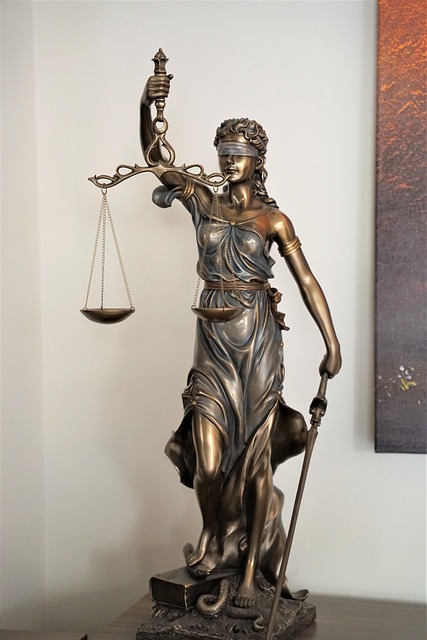Comprehensive finance crime probes must consider the profound impact of jury demographics on verdict outcomes, especially in complex cases. The composition of juries – including age, gender, racial diversity, education, and socio-economic status – significantly influences decisions, potentially leading to biased results. Effective prosecution strategies require an understanding of these dynamics to ensure fair trials, maintain community trust, and achieve verdicts based solely on the merits of the case, rather than demographic factors.
“Unraveling the intricate web of finance crime probes, this article delves into the critical intersection of law and demography. We explore how ‘Understanding Finance Crime Probes’ shapes legal outcomes, with a particular focus on the impact of jury demographics. Analyzing age and gender influences on verdicts, we uncover potential biases. Additionally, we examine cultural diversity’s role and propose strategies to enhance fairness, ensuring demographic factors don’t skew justice. By understanding these dynamics, we aim to highlight the importance of impartial juries in finance crime cases.”
- Understanding Finance Crime Probes: Definition and Importance
- The Role of Jury Demographics in Legal Proceedings
- Impact of Age and Gender on Verdicts: A Comprehensive Analysis
- Cultural Diversity and Bias: Uncovering Potential Pitfalls
- Enhancing Fairness: Strategies to Mitigate Demographic Influences
Understanding Finance Crime Probes: Definition and Importance

Finance crime probes are thorough investigations conducted to uncover and prosecute illegal activities related to financial transactions. These probes are crucial in addressing white-collar and economic crimes, which often involve complex schemes and sophisticated techniques. They play a pivotal role in maintaining the integrity of financial systems and protecting investors from fraudulent practices. By delving into these investigations, authorities aim to dismantle criminal networks, win challenging defense verdicts, and ensure justice for victims.
Understanding the impact of jury demographics on verdicts is an essential aspect of these probes. The composition of juries can significantly influence the outcome of trials, especially in cases involving complex financial matters. Effective prosecution strategies consider this dynamic, aiming to secure fair and impartial judgments while avoiding indictment based solely on demographic biases. This meticulous approach ensures that justice is not only served but also perceived as such by the community at large.
The Role of Jury Demographics in Legal Proceedings

The composition of juries, often referred to as jury demographics, plays a significant role in shaping legal outcomes, particularly in criminal trials. Research suggests that the background and characteristics of jurors can influence their decision-making process and, consequently, impact verdicts. Factors such as age, gender, racial diversity, education levels, and socio-economic status are all components that contribute to the intricate tapestry of a jury’s perspective. Understanding these demographics is crucial for both prosecutors and general criminal defense attorneys when strategizing their cases, as it allows them to anticipate potential biases or influences on the jury.
For his clients, especially in complex corporate and individual cases, understanding the impact of jury demographics can be pivotal. Attorneys may need to carefully select and present evidence to resonate with specific demographic groups within the jury. This strategy ensures that arguments are tailored to address subconscious biases, thereby enhancing the chances of a fair trial and a verdict based on the merits of the case rather than external influences.
Impact of Age and Gender on Verdicts: A Comprehensive Analysis

The composition of juries has long been a subject of interest in legal circles, with research indicating that age and gender can significantly influence verdict outcomes. This phenomenon raises questions about the role of demographic factors in ensuring justice, especially in high-stakes cases that often attract significant media attention and involve substantial financial implications. Studies have shown that younger jurors tend to favor more punitive measures, while older individuals may be more inclined towards leniency, with gender playing a moderating role in these tendencies.
These variations in judgment can be attributed to several factors. Younger jurors, shaped by contemporary social and economic realities, might be more sensitive to issues of inequality and injustice, leading them to advocate for stricter penalties. Conversely, older individuals, with their wealth of life experiences, could exhibit a greater understanding of the complexities involved in certain cases, resulting in more nuanced verdicts. Understanding these dynamics is crucial, not only for maintaining fairness in our justice system but also for fostering trust between the legal process and the philanthropic and political communities that rely on it for resolving high-stakes cases.
Cultural Diversity and Bias: Uncovering Potential Pitfalls

The dynamics between cultural diversity and financial crime investigations introduce complex variables that can significantly impact outcomes. In high-stakes cases, where the potential consequences are immense, an unbiased assessment becomes paramount. The composition of juries, for instance, plays a pivotal role in reaching just verdicts. Research suggests that the impact of jury demographics on decisions cannot be overlooked, with diverse panels often offering a more nuanced perspective. This is particularly crucial in financial crimes, where intricacies of law and unique cultural contexts may influence perceptions.
While an unprecedented track record of successful prosecutions is laudable, it’s essential to consider potential biases. Avoiding indictment based solely on demographic factors is critical to ensuring fairness. However, awareness of how cultural differences might subtly shape interpretations is vital for navigating these complex cases effectively. Understanding and mitigating these unconscious biases are steps towards achieving true equity in the justice system.
Enhancing Fairness: Strategies to Mitigate Demographic Influences

Ensuring fairness in the justice system is a multifaceted challenge, particularly when considering the impact of jury demographics on verdicts. Research suggests that the composition of juries—in terms of race, gender, and socioeconomic status—can significantly influence the outcomes of criminal trials, especially in cases involving white-collar and economic crimes. For his clients facing these charges, understanding and mitigating these demographic influences are crucial steps towards achieving a complete dismissal of all charges.
Strategies to enhance fairness include diverse jury pools that reflect the community at large, ensuring that jurors are not biased by stereotypes or preconceived notions. Additionally, transparent and rigorous selection processes, free from discriminatory practices, can help maintain impartiality. Educating both jurors and legal professionals about implicit biases and their potential impact on decision-making is also vital. By adopting these measures, the justice system aims to create a more equitable environment where verdicts are based solely on the evidence presented, regardless of demographic factors.
The intricate relationship between jury demographics and verdict outcomes highlights the need for a more inclusive and diverse legal system. By examining age, gender, cultural background, and other factors, we can uncover potential biases that may influence decisions in finance crime probes. Understanding these dynamics is crucial to ensuring fairness and promoting justice. Moving forward, implementing strategies to mitigate demographic influences will foster a more balanced approach, ultimately enhancing the integrity of legal proceedings.






